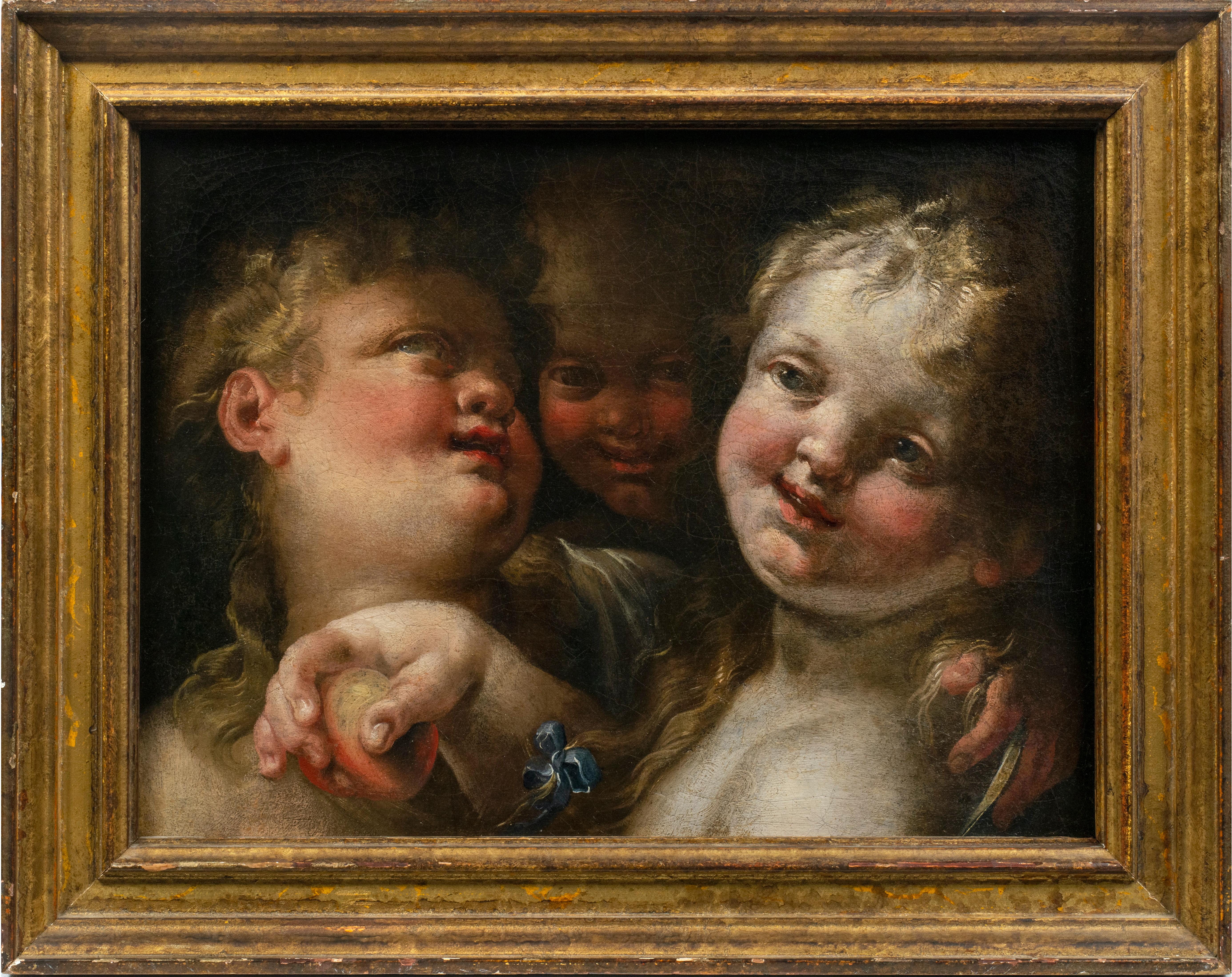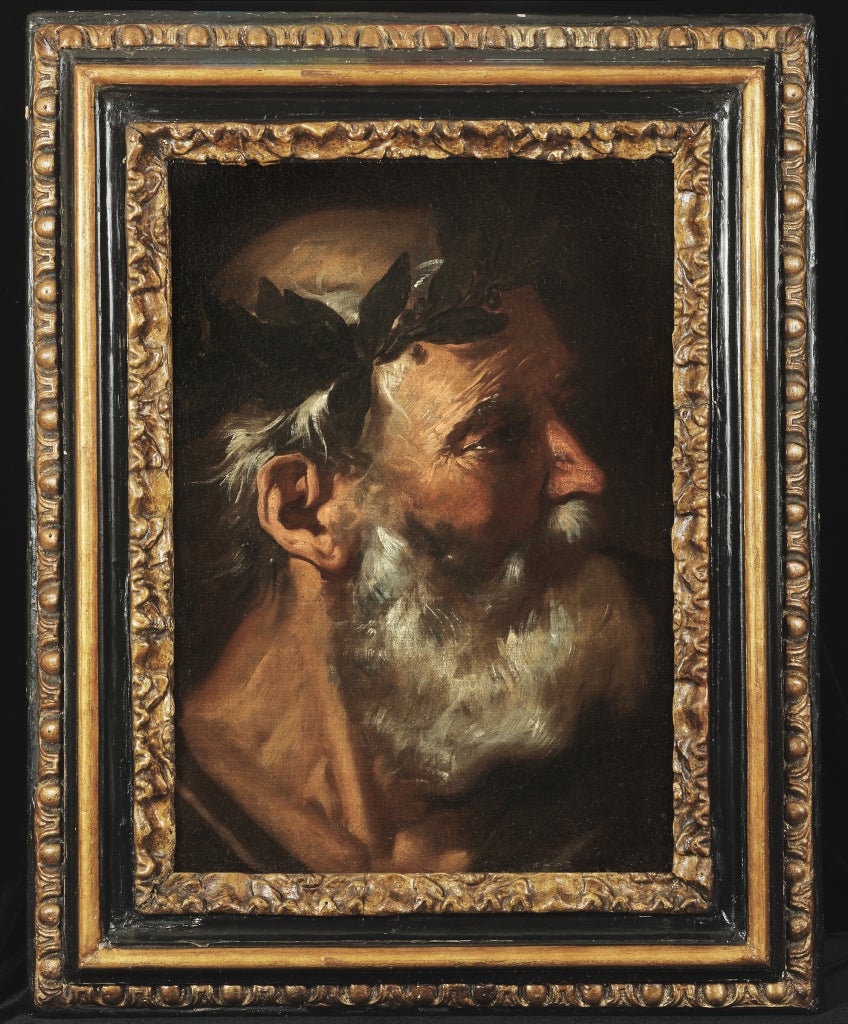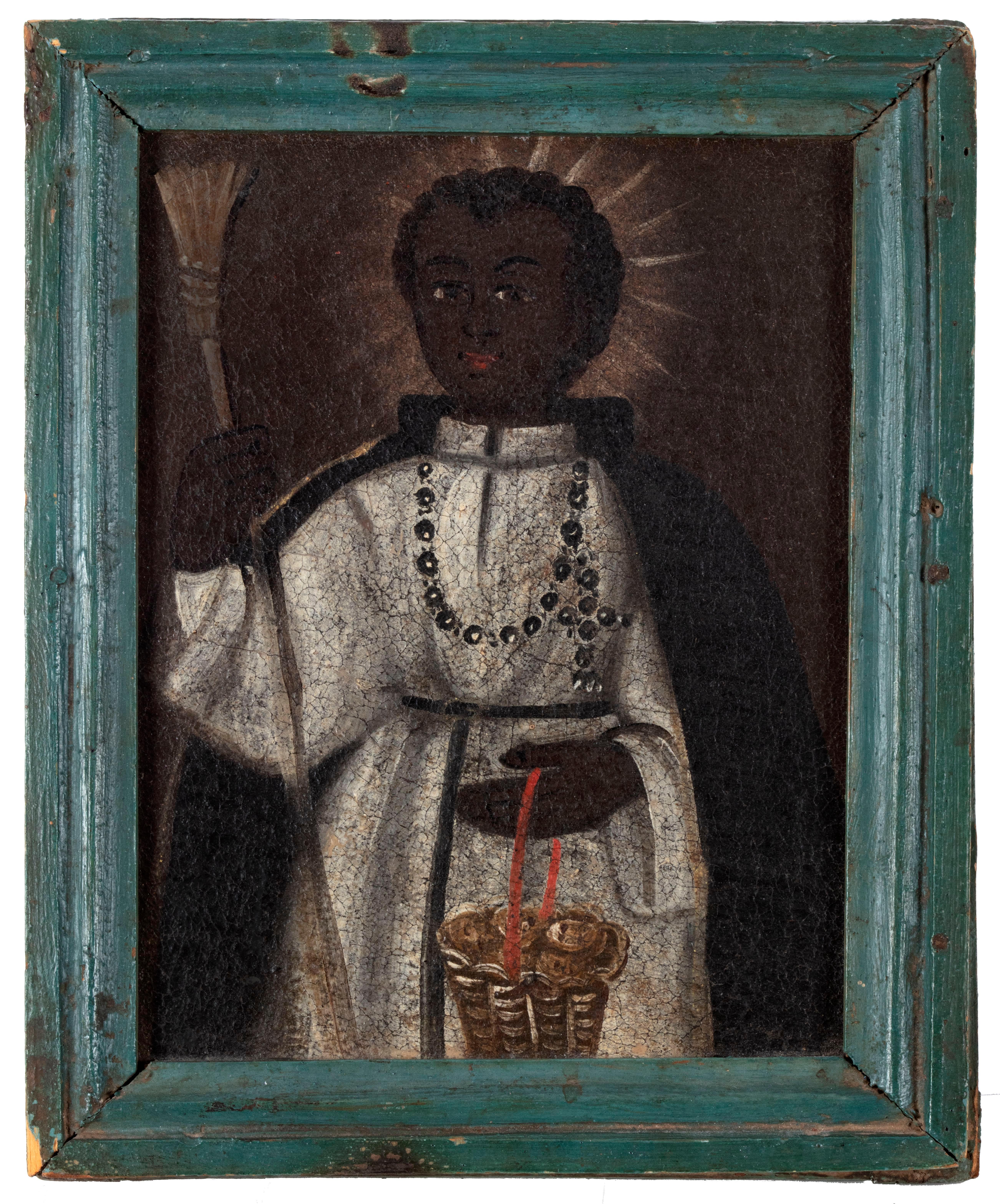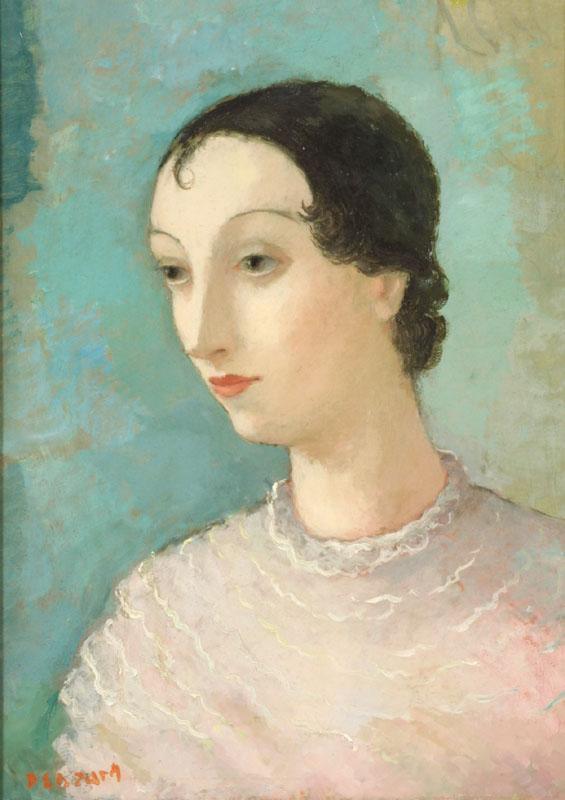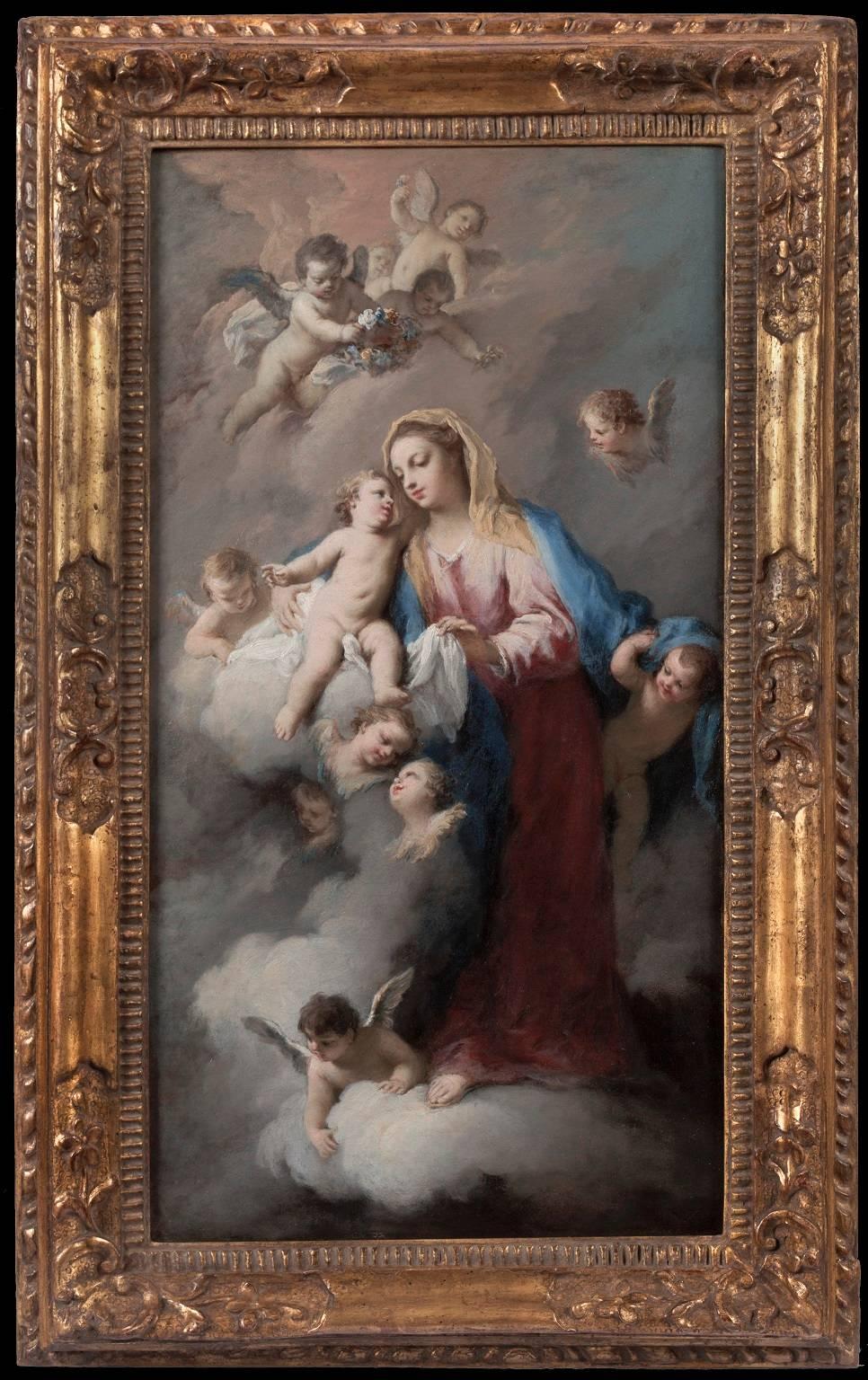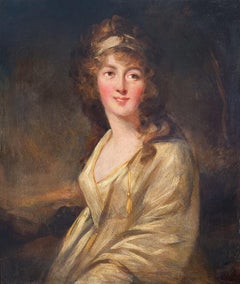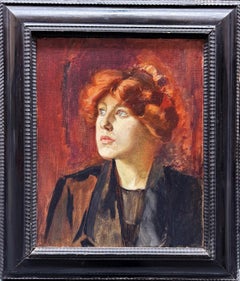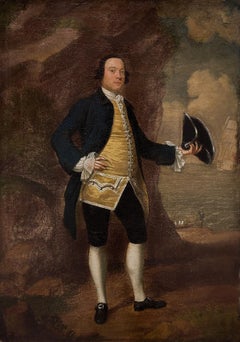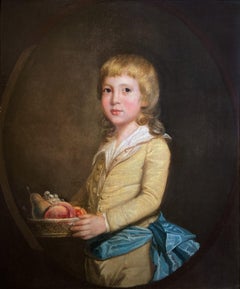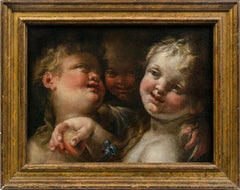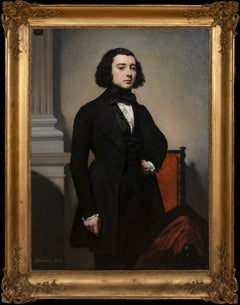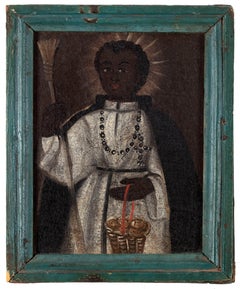Items Similar to Portrait of a King's Messenger, 18th Century English Artist, Original Frame
Want more images or videos?
Request additional images or videos from the seller
1 of 6
Charles PhilipsPortrait of a King's Messenger, 18th Century English Artist, Original Frame
About the Item
Charles Philips
1703 - 1747
Portrait of a King's Messenger
Oil on canvas
Image size: 35 ¾ x 28 inches
Original gilt frame
King's Messenger
The job of a King's Messenger was that of a diplomatic courier, hand-carrying important and secret documents around the world. Some say that the history of the sovereigns' messengers goes back to 1199, but the first known messenger was John Norman, who in 1485 earned 4d (1½ pence) per day for carrying the state papers of Richard III.
The silver greyhound on the messenger's badge dates back to Charles II. In 1660, during his exile at Breda, Netherlands, Charles II issued a declaration of amnesty to all those who had opposed him and his father. He used messengers to make his intentions known. In answer to the messenger's question "How will they know me?", Charles reached forward to a silver bowl on the table in front of him. This bowl, with four decorative greyhounds standing proud above the rim, was well known to all courtiers. Charles broke off a greyhound and gave it to the messenger as a guarantee that the message came from him. From that date, the King's Messenger always wore a silver greyhound around his neck.
Later, dating from George II or III, a badge with the Royal Arms in enamel, with the greyhound suspended beneath, was worn. A George III example of the King's Messenger Badge, pre 1800, sold for over £30,000 pounds some years ago.
The silver greyhounds were minted for each new reign, except the brief one of King Edward VIII. The sovereign's messengers were originally controlled by the Lord Chamberlain, being Messengers of the Great Chamber. When the Foreign Office was created in 1782, the messengers remained common to the three Secretaries of State.
Charles Philips was an English artist known for painting a number of portraits and conversation pieces for noble and Royal patrons in the mid-eighteenth century.
Philips was baptised in the combined parish of St Mildred, Poultry with St Mary Colechurch. He was the son of Richard Philips, also a portraitist. He married Mary Francis in 1737 and moved to Great Queen Street shortly afterwards. Philips died in London in 1747 only six years after his father.
As the son of a portraitist, Philips likely learnt the trade from his father. He was primarily a painter of small portraits and conversation pieces. George Vertue notes that 'in painting small figure portraits & conversations [which] has met with great encouragement amongst People of Fashion—even some of ye Royal Family'. In 1732 he painted conversation works for the Duchess of Portland and the Duke of Somerset. Throughout the 1730s these conversation pieces increased in complexity with the subjects becoming more numerous and engaging in more varied activities.
Following the example set by fellow painters of small scale conversation pieces such as Philippe Mercier and William Hogarth, Philips moved into the more lucrative field of portrait painting in the latter part of the decade. In 1737 he reached the height of his career when he painted the Prince and Princess of Wales in a pair of full-length portraits. The Prince of Wales was a well known patron of the arts and especially of immigrant artists. This included Jacopo Amigoni and Mercier, principal influences on Philips.
Two of Philips' paintings, now in the Royal Collection, describe fashionable London clubs of which there are no other records. The first, dated 1732, shows Frederick, Prince of Wales with members of 'La Table Ronde', and once hung at Carlton House. The painting casts the Prince as a new King Arthur, with his knights seated around the round table. The other painting, notes in a description of 1813 that "Frederick Prince of Wales Established a Club — Called the Gang or Harry The Fifth’s Club — the members of which were Call’d Fallstaffs Points — Bardolph &c", apparently alluding to Shakespeare's portrayal of Henry V and his rowdy entourage.
The known body of his work can be dated entirely to the 1730s, with little known of his later life or any later work. The last known portrait painted by Philips dates from 1740. It is not known why Philips's output apparently ended abruptly.
- Creator:Charles Philips (1707 - 1742, American)
- Dimensions:Height: 35.75 in (90.81 cm)Width: 28 in (71.12 cm)
- More Editions & Sizes:1 of 1Price: $48,798
- Medium:
- Period:
- Condition:
- Gallery Location:London, GB
- Reference Number:1stDibs: LU5243158941
About the Seller
5.0
Vetted Professional Seller
Every seller passes strict standards for authenticity and reliability
Established in 2007
1stDibs seller since 2014
80 sales on 1stDibs
Typical response time: 3 hours
- ShippingRetrieving quote...Shipping from: London, United Kingdom
- Return Policy
Authenticity Guarantee
In the unlikely event there’s an issue with an item’s authenticity, contact us within 1 year for a full refund. DetailsMoney-Back Guarantee
If your item is not as described, is damaged in transit, or does not arrive, contact us within 7 days for a full refund. Details24-Hour Cancellation
You have a 24-hour grace period in which to reconsider your purchase, with no questions asked.Vetted Professional Sellers
Our world-class sellers must adhere to strict standards for service and quality, maintaining the integrity of our listings.Price-Match Guarantee
If you find that a seller listed the same item for a lower price elsewhere, we’ll match it.Trusted Global Delivery
Our best-in-class carrier network provides specialized shipping options worldwide, including custom delivery.More From This Seller
View AllPortrait of Lady
Located in London, GB
Oil on canvas
Image size: 30 x 25 inches (76 x 63.5 cm)
Original gilt swept frame
This portrait is marked by its loose brushwork, which creates a sense of hazy nostalgia. Despite th...
Category
Late 18th Century Academic Portrait Paintings
Materials
Canvas, Oil
$19,519
Portrait of a Lady, Early 20th Century Oil
By Arthur Ambrose McEvoy
Located in London, GB
Follower of Ambrose McEvoy
Circa 1910
Portrait of a Lady
Oil on canvas
Image size: 20 x 16 inches (51 x 40.5 cm)
Original ebonised Frame
A stunning portrait of a lady with flami...
Category
Early 20th Century Portrait Paintings
Materials
Canvas, Oil
Portrait of a Privateer
By Francis Hayman
Located in London, GB
Portrait of a Privateer
Francis Hayman
1708 - 1776
Oil on canvas
Image size: 20 x 14 inches (51 x 36 cm)
Contemporary style frame
Provenance
Charles Fleischmann Esq
Here, a small ...
Category
18th Century English School Portrait Paintings
Materials
Canvas, Oil
Portrait of a Young Boy Carrying a Fruit Basket, 18th Century Oil on Canvas
By Thomas Beach
Located in London, GB
Oil on canvas
Image size: 30 x 25 inches (76 x 63.5 cm)
Contemporary hand-carved frame
This is a charming 18th century portrait of a young boy, sporting a golden child's two-piece w...
Category
18th Century English School Portrait Paintings
Materials
Canvas, Oil
Portrait of a Young Boy Carrying a Fruit Basket, 18th Century Oil on Canvas
By Sir William Beechey
Located in London, GB
Oil on canvas
Image size: 30 x 25 inches (76 x 63.5 cm)
Hand carved gilt frame
This is a charming 18th century portrait of a young boy, sporting a golden child's two-piece with a fl...
Category
18th Century English School Portrait Paintings
Materials
Canvas, Oil
Portrait of a Lady, Oil on canvas, 18th English Century Painting
By George Romney
Located in London, GB
Oil on canvas
Image size: 22 x 20 inches (22.75 x 51 cm)
Pierced gilt frame
This half-length portrait shows the sitter with her head and eyes looking over her shoulder, to the right. She is dressed in a delicate blue dress and blue shawl with her hair tied up away from her face. The composition of the painting is simple but effective; the woman stands out and is the undeniable focus of the viewer's attention.
George Romney's artistic style is characterised by its focus on the beauty and elegance of human forms. Here, one can appreciate his ability to capture the delicacy of facial features and the soft textures of clothing. In addition, Romney has used a soft and diffuse brushstroke technique that creates a light and soft effect in the work. The dark and diffused background highlights the young woman's figure even more, creating an effect of depth and realism.
It is possible that this sitter is Miss Anne Dutton.
George Romney
Romney was a fashionable portrait painter of late 18th-century English society. In his portraits Romney avoided delving into the character or sensibilities of the sitter. His great success with his society patrons depended largely on just this ability for dispassionate flattery. Line rather than colour dominates; the flowing rhythms and easy poses of Roman classical sculpture underlie the smooth patterns of his compositions.
From 1755 to 1757 Romney was the pupil of Christopher Steele, an itinerant portrait and genre painter. Romney’s career began when he toured the northern English counties painting portraits for a few guineas each. In 1762 he went to London. His history painting The Death of General Wolfe won him an award from the Society of Arts; nonetheless he turned almost immediately to portrait painting. In 1764 he paid his first visit to Paris, where he was befriended by Joseph Vernet. Romney especially admired the work of Nicolas Le Sueur, whose use of the antique strongly appealed to him. In 1773 he went to Italy for two years, where he studied Raphael’s Stanze frescoes in Rome, Titian’s paintings...
Category
18th Century Portrait Paintings
Materials
Canvas, Oil
You May Also Like
Three Angels
By Domenico Piola the Elder
Located in New York, NY
Provenance:
Robert L. and Bertina Suida Manning, New York, until 1996
Private Collection, USA
One of the leading artists in Genoa during the second half of the seventeenth century, Domenico Piola came from a successful family of artists, renowned for their many illusionistic ceiling programs throughout Genoese churches and palaces. A prolific draughtsman and painter, Domenico oversaw an extremely productive studio. In addition to his collaborations with numerous other artists, Domenico also provided many designs for book illustrations and prints that circulated throughout Europe, earning him international exposure and high acclaim in his own day.
As Dr. Anna Orlando has indicated (written communication), the present work is an early work by Piola, datable from the late 1640s. At this time the young artist came strongly under the influence of Castiglione and Valerio Castello, while admiring the works of Giulio Cesare Procaccini. Piola’s works from this period are exuberant and fluid, and the artist’s love of portraying children is evident from the angels and putti that populate both his altarpieces and more intimate paintings.
The present work depicts three angels...
Category
17th Century Baroque Figurative Paintings
Materials
Canvas, Oil
Head of a Classical Poet (Socrates?)
By Pier Francesco Mola
Located in New York, NY
Provenance:
Possibly Antonio Amici Moretti, Rome, 1690
Roy Clyde Gardner, Union, Mississippi, 1970s until 2004; by whom given to:
Mississippi Band of Choctaw Indians, 2004-2010
Lit...
Category
17th Century Baroque Paintings
Materials
Canvas, Oil
Portrait Of A Young Gentleman, circa 1810 by Louis DEVEDEUX (1820-1874)
Located in Blackwater, GB
Portrait Of A Young Gentleman, 19th Century
by Louis DEVEDEUX (1820-1874) sales to $40,000
Huge circa 1850 French portrait of a young gentleman, oil on canvas. Excellent quality an...
Category
19th Century Portrait Paintings
Materials
Canvas, Oil
Saint Martin de Porres
Located in New York, NY
Provenance: Private Collection, New York, until 2022.
Martín de Porres was born in Lima in 1579, the illegitimate son of a Spanish-American father, J...
Category
Late 18th Century Paintings
Materials
Canvas, Oil
"L' Espagnole", Portrait Oil Painting by Dietz Edzard, 1935
By Dietz Edzard
Located in Berlin, DE
Oil on Canvas, 1935 by Dietz Edzard ( German/French 1893-1963 ) Height: 17.99 in ( 45,7 cm ), Width: 12.99 in ( 33 cm )
With the artist's signature stamp at lower left. Framed.
Prope...
Category
1930s Post-Impressionist Portrait Paintings
Materials
Canvas, Oil
Madonna and Child with Angels in the Clouds
Located in New York, NY
Provenance: Charles H. and Virginia Baldwin, Claremont, Colorado Springs, Colorado ca. 1907-1934; thence by descent until sold in 1949 to:
Charles Blevins Davis, Claremont (renamed Trianon), Colorado Springs 1949 -until gifted in 1952 to:
The Poor Sisters of Saint Francis, Trianon, Colorado Springs, 1952 until acquired, 1960, by:
John W. Metzger, Trianon, renamed as the Trianon School of Fine Arts, Colorado Springs, 1960-1967; when transferred to:
The Metzger Family Foundation, Trianon Art Museum, Denver, 1967 - 2004; thence by descent in the Metzger Family until 2015
Exhibited: Trianon Art Museum, Denver (until 2004)
The present work is a spectacular jewel-like canvas by Amigoni, rich in delicate pastel colors, most likely a modello for an altarpiece either lost or never painted. In it the Madonna stands firmly upon a cloud in the heavens, her Child resting on a delicate veil further supported by a cloud, as he gently wraps his arm around his mother’s neck. From above angels prepare to lower flowers and a wreath, while other angels and seraphim surrounding the two joyfully cavort.
Dr. Annalisa Scarpa, author of the forthcoming monograph on Jacopo Amigoni...
Category
18th Century and Earlier Figurative Paintings
Materials
Canvas, Oil
Recently Viewed
View AllMore Ways To Browse
English King
Antique 18th Century English Frames
Antique Enamel Painting
Mid Century King Set
Antique Enamel Portraits
Mid Century Enamel Painting
English King Set
Carlton House
Prince Of Wales Silver
English King Silver
King George Ii
Henry V
Prince Philip
King George V
King William Iii
Round Small End Mid Century Tables
Pair English End Tables
King William Silver
